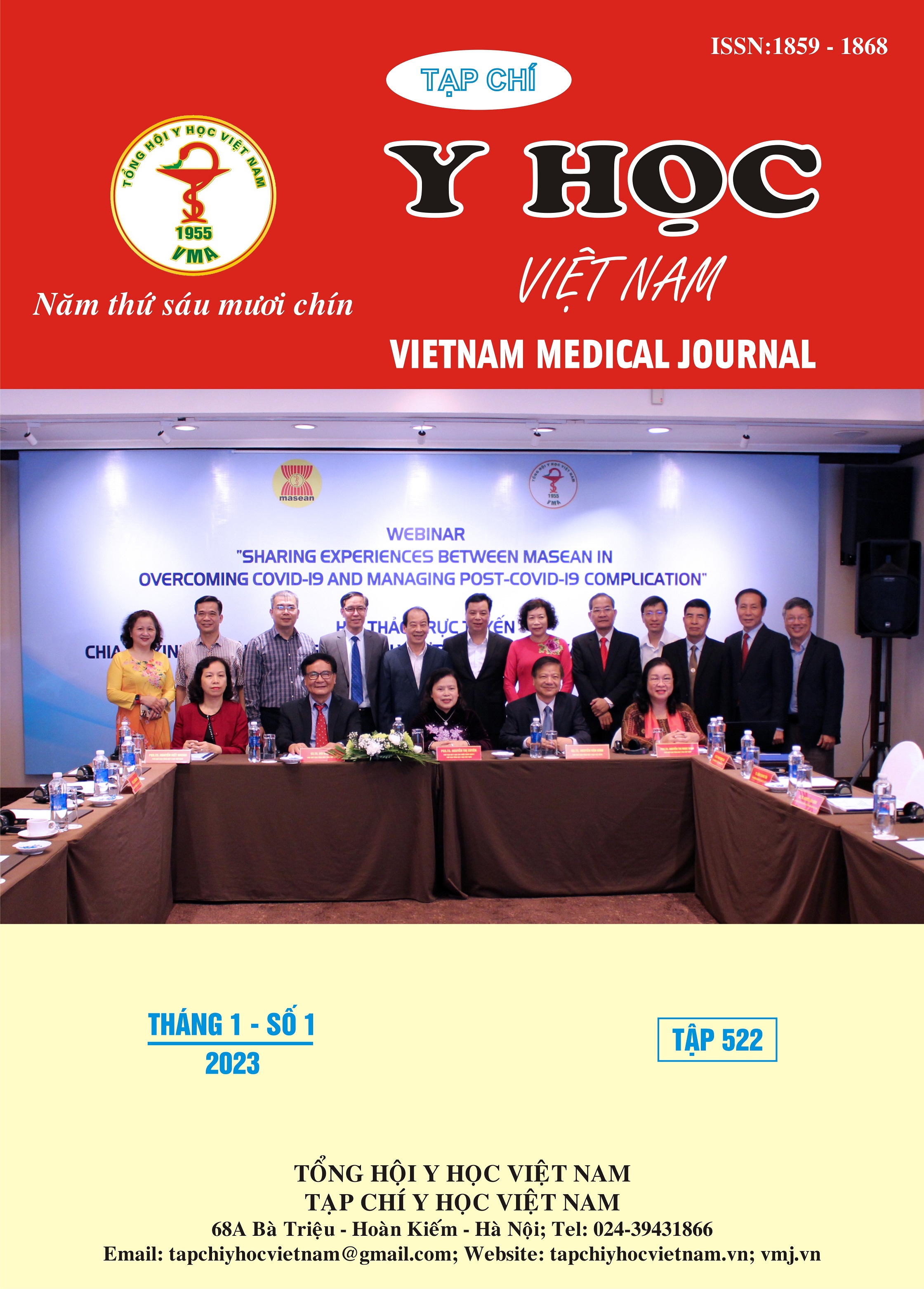EVALUATING THE CORRELATION BETWEEN EtCO2 AND CARDIAC OUTPUT IN ICU PATIENTS
Main Article Content
Abstract
To evaluate the correlation between cardiac output and EtCO2 in ICU patients. Methods: A cross-sectional descriptive study on 28 ICU patients, measuring EtCO2 and CI simultaneously for each patient at 5 time points, data was coded and processed according to statistical methods. Research results: The average values of CI and EtCO2 were 3.16 ± 0.59 and 33,84 ± 4,20, respectively. The mean value of CI in the low cardiac output group was 2.29 ± 0.17 which was statistically significantly lower than in the normal cardiac output group of 3.35 ± 0.46 with p=0,000. The mean value of EtCO2 in the low cardiac output group was 27.16 ± 2.12 which was statistically significantly lower than in the normal cardiac output group by 35.29 ± 2.94 with p = 0,003. Cardiac output and EtCO2 positively correlated with r=0.410 and p=0,000. In the low cardiac output group, CI and EtCO2 positively correlated with r=0,423 and p=0,007. Meanwhile, the correlation coefficient between CI and EtCO2 in the normal cardiac output group was 0.264 with p=0.004. Conclusion: Cardiac output and EtCO2 are positively correlated especially in the case of low cardiac output.
Article Details
Keywords
EtCO2, CO, CI, end tidal carbon dioxide, cardiac output, cardiac index.
References
2. Kate E DrummondEdward Murphy. Minimally invasive cardiac output monitors. Continuing Education in Anaesthesia, Critical Care & Pain. 2011;2-6.
3. Weil, M. H., Bisera, J., Trevino, R. P., et al. Cardiac output and end-tidal carbon dioxide. Critical Care Medicine. 1985;13(11): 907–909.
4. Dunham CM, Chirichella TJ, Gruber BS, et al. In emergently ventilated trauma patients, low end tidal CO2 and low cardiac output are associated and correlate with hemodynamic instability, hemorrhage, abnormal pupils, and death. BMC Anesthesiology. 2013;13:1-8.
5. Way M, Hill GE. Intraoperative end-tidal carbon dioxide concentrations: what Is the target. Anesthesiology Research and Practice. 2011;1-3.
6. Yosefy C, Nasri Y, Magen E, et al. End tidal carbon dioxide as predictor of the arterial PCO2 in the emergency department setting. Emerg Med J. 2004;21:557-559.
7. Singla MK, Sodhi K, Shrivastava A, et al. End-tidal CO2 should not be parameter for ventilatory adjusment during low cardiac output Stated like off-pump coronary artery bypass grafting. Journal of General Practice. 2014;2:1-4.
8. Kheng CP, Rahman NH. The Use of End-Tidal Carbon Dioxide Monitoring in Patient with Hypotension in Emergency Department. International Journal of Emergency Medicine. 2012.
9. McGillicuddy DC, Tang A, Cataldo L, et al. Evaluation of End Tidal Carbon Dioxide Role in Predicting Elevated SOFA Scores and Lactic Acidosis. Intern Emerg Med. 2009;4:41-44.
10. Tjokorda Gde Agung Senopathi, Made Wiryana, Ketut Sinardja, et al. The End-Tidal CO2 correlation with a decreased cardiac output measured by ultrasonic cardiac output monitor in intubated ICU patients. Bali Medical Journal (Bali Med J). 2017;6:1: 12-16.


